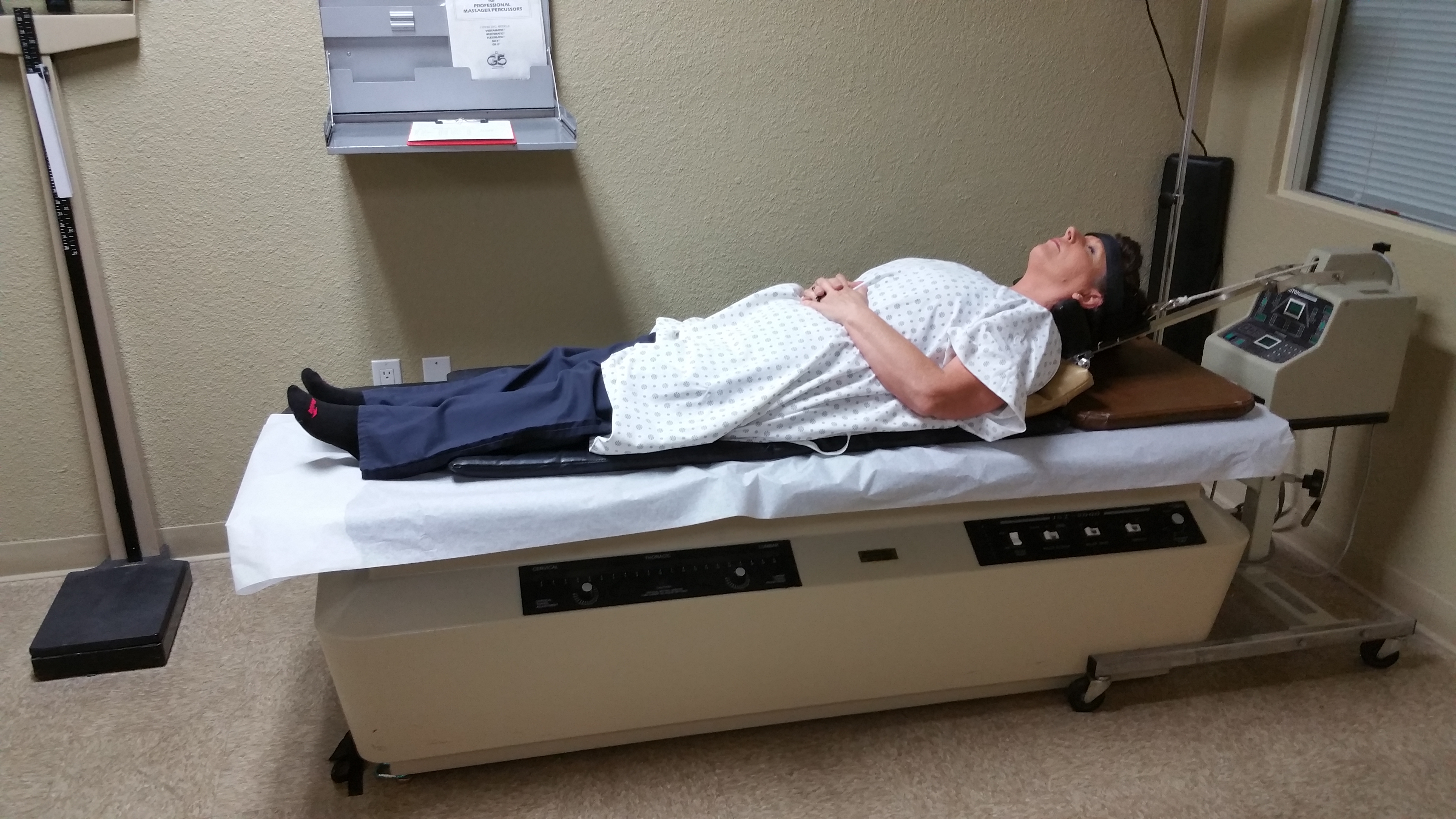Lumbar Decompression Therapy
Non-Surgical Spinal Decompression is used primarily to treat disc injuries in the neck and in the low back. This treatment option is safe and utilizes FDA approved equipment to apply distraction forces to spinal structures in a precise and graduated manner.
Distraction is offset by cycles of partial relaxation. This technique of spinal decompression therapy, that is, unloading due to distraction and positioning, has shown the ability to gently separate the vertebrae from each other, is also known as negative intra-discal pressure.
The negative pressure may induce the retraction of the herniated or bulging disc into the inside of the disc, and off the nerve root, thecal sac, or both to some degree.
The cycles of decompression and partial relaxation, over a series of visits, promote the diffusion of water, oxygen, and nutrient-rich fluids from the outside of the discs to the inside. These nutrients enable the torn and degenerated disc fibers to begin to heal. In addition, the repetitive stretching and relaxation with increased tractional force, combined with flexion extension movement, helps break up any adhesions in the ligament structures of the spine (caused by subsequent bleeding of the structures from the original insult/trauma/injury to the spine). Once again it’s important to realize that these ideas are theories, that no formal studies have been performed to validate or invalidate these theories/concepts. However, clinically the results have been validated by a number of patients in a variety of physicians performing the procedure.
